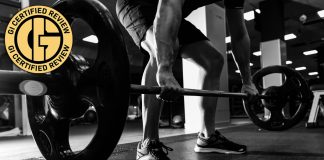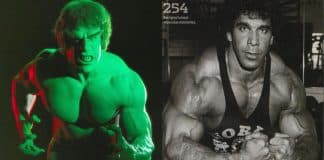
Reverse cable crossovers are an excellent movement for engaging the posterior delts.
Did you know that your back muscles and shoulders are fundamental in lifting heavy objects, maintaining mobility, and ensuring proper posture? Research indicates that strengthening your shoulders and back can significantly enhance your posture (1). The reverse cable crossover is an effective exercise for improving your back and shoulder muscles.
This guide provides a comprehensive overview of the reverse cable crossover exercise, including the muscles it targets and its key benefits. It offers detailed, step-by-step instructions for executing the exercise with the correct form. Moreover, the guide presents a selection of alternative exercises aimed at similar muscle groups, enabling athletes to vary their workout routines and maximize their training results.
Technique & Muscles Worked
The reverse cable crossover is an isolation cable exercise that works the posterior delts, rotator cuffs, and upper back (traps and rhomboids). The arms and core muscles, like your abs and obliques, act as stabilizers during this exercise.
Position the pulleys at shoulder height on a functional trainer on each side to perform this exercise. Remember to bend your elbows slightly to get a fuller and deeper range of motion that better targets your muscles. The cable keeps your targeted muscles under constant tension throughout this motion, which helps induce muscle hypertrophy. Below is a step-by-step guide highlighting how to perform the reverse cable crossover standing.
- Stand in front of the functional trainer with your legs shoulder-width apart and your knees slightly bent for stability.
- Grab the left D-handle using a reverse grip across your body with your right hand and the proper handle with your left.
- Position yourself between the machine with extended arms, but slightly bend your elbows.
- Brace your core, keep your back straight, and pull your shoulder blades back and chest up. This is your starting position.
- Next, slowly pull your arms back until they’re parallel to your body (you should feel the tension in the cables). Pause for about one to two seconds in this position.
- Return the cable to the starting position slowly and in a controlled manner to complete one rep.
- Repeat for as many reps as you desire.
Benefits
The reverse cable crossover is a strength training exercise that targets multiple muscle groups in the upper body. The cables provide constant tension on the target muscles, which helps aid muscle growth. Below are some benefits of performing this exercise.
Builds & Strengthens the Rear Delts
Performing the reverse cable crossover primarily isolates and targets the back and shoulders. It significantly strengthens the rear deltoids (which give that 3D look when well-built), rotator cuffs, and upper back muscles. These areas in the body are often overlooked, even by professional athletes.
Builds the Core Muscles
The reverse cable crossover requires a lot of balance and stability to execute. The correct form of exercise activates these core muscles and puts them under constant tension, building and strengthening them. A strong core gives good posture and helps reduce the chance of injuries. It also helps with total body stability and equal load distribution.
Improves Your Form for Other Exercises
The reverse cable exercise effectively works your back and shoulders. When done right, it strengthens and builds these muscles, improving your form. You can transition to other exercises and enhance your training goals. These exercises include bench presses, pull-ups, rows, and shrugs.
Better Mind-Muscle Connection
The reverse cable crossover is an isolation exercise that targets your upper body while recruiting other muscle groups. It focuses on these upper body muscles, increasing the mind-muscle connection, which leads to better muscle growth and development.
Improved Range of Motion
When performing the reverse cable crossover, you must employ a full range of motion, flexing and extending the target muscles and joints. This strengthens these muscles and joints, making mobility more accessible and muscle growth easier. Over time, this exercise increases your range of motion.
Reverse Cable Crossover Alternatives
Gyms mostly use the reverse cable crossover because it uses a functional trainer. However, to avoid hitting a training plateau, it’s essential to integrate other exercises to maximize upper-body gains. This study shows how athletes can benefit from adding alternative exercises to their routines (2). Below is a list of exercises you can incorporate to build your shoulders and back during your workout sessions.
Face Pulls
The face pulls work similarly to the muscles in the reverse cable crossover. They use a cable machine and require the proper form to execute. This is also an excellent alternative to give your shoulders that well-rounded look.
Incline Dumbbell Raises
The incline dumbbell raise is a weight-lifting and strength-training exercise that targets the delts, traps, and rhomboids. It uses dumbbells, though other free weights like kettlebells or barbells can also be used.
T-Bar Rows
The T-bar row is a row variation that works the rear deltoids and back muscles, such as the traps, lats, and rhomboids. It’s an effective exercise for increasing muscle mass in the back and strengthening the shoulders. The T-bar row is unique in that it can build both strength and mass.
FAQs
What muscle does reverse cable crossovers work?
The reverse cable crossover is an isolation exercise that works your upper body. This includes the rear deltoids, rotator cuffs, traps, and rhomboids. It recruits other muscles, like the core and arms, that help with stabilization during this exercise.
Do reverse cable crossovers work the chest?
The reverse cable crossover is an upper-body exercise that primarily works the upper back and posterior delts. It can do some recruiting from the upper pecs, but it’s not the best exercise for working your chest.
Is the cable crossover for the back or shoulders?
The reverse cable crossover is excellent for building your back and shoulders. It isolates these muscles and builds them. It mainly focuses on the back of the shoulders and the upper back muscles.
Follow us on Instagram, Facebook, and Twitter for more exercise guides!
References
- Lee, D. Y., Nam, C. W., Sung, Y. B., Kim, K., & Lee, H. Y. (2017). Changes in rounded shoulder posture and forward head posture according to exercise methods. Journal of physical therapy science, 29(10), 1824–1827. https://doi.org/10.1589/jpts.29.1824
- Krzysztofik, M., Wilk, M., Wojdała, G., & Gołaś, A. (2019). Maximizing Muscle Hypertrophy: A Systematic Review of Advanced Resistance Training Techniques and Methods. International journal of environmental research and public health, 16(24), 4897. https://doi.org/10.3390/ijerph16244897















